#spaceborne life form
Text
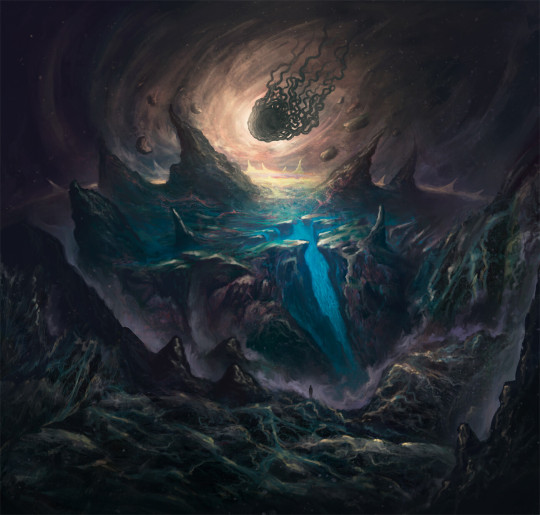
"Outer Space Landscape" by Mark Erskine.
#mark erskine#erskine designs#alien landscape#spaceborne life form#space jellyfish#mountain#floating rocks#asteroid#space art#surrealism
12 notes
·
View notes
Text

After the invention of the Zero Point drive, the human race rapidly spread out across the stars, from the solar hub to the fringworlds. However, space is a hostile place, and habitable worlds are quite rare. As a result, many new variants of humanity have emerged, modifying themselves in order to survive the strange, alien environments they find themselves in… or sometimes just for fun. Pictured here are but a small sample of variant human subspecies…
Titanian: Corpulent, furry human variant adapted to extremely cold environments; initially developed to better withstand the harsh conditions of Titan, Saturn’s icy moon, but have since spread to other frozen worlds; typically inhabit pressurized underground tunnel cities carved into the ice.
Spaceborne: Tall, lanky variant with prehensile feet and tails, optimized for life in microgravity; one of the oldest variant groups, created during the earliest days of the first interstellar age; designed to live aboard long-distance exploration/colonization vessels.
(Artist’s note: these folks are heavily influenced by @jayrockin ‘s tailed spacers - go check out their stuff, it’s awesome!)
Rock Rats: Another early variant designed to live and work in the asteroid belt; short, stocky bodies built for navigating the narrow ducts, crawlspaces, and passageways common aboard mining vessels, as well as the labyrinthine tunnels of their hollowed-out asteroid homes; “rock rat” is a colloquial term, originally derogatory but has since been reclaimed.
Voidwalkers: Highly-modified variant designed to survive in the vacuum of space; originally created by a dubiously-ethical megacorp to serve as an orbital labor force; have since gone on to form their own society of nomadic spacefaring clans, offering their unique services to ships and stations in need.
Vamps: A collective of eccentric horror fiction enthusiasts who deliberately bio-modded themselves to resemble their favorite imaginary bloodsuckers; long-lived, sensitive to sunlight, crave the taste of blood; actually pretty harmless, as they tend to subsist on synthetic blood substitutes.
(Artist’s note: apparently its a weirdly common thing for vampires to inexplicably show up in otherwise grounded hard-sf settings, so I decided to jump on the bandwagon!)
SmartPets: Bipedal uplifted animals with trace amounts of human DNA, available in a wide variety of species; created and sold by a division of the same megacorp as the voidwalkers; designed to be the ultimate domestic companion; infamously advertised with the tagline “man’s best friend just got better.”
23 notes
·
View notes
Text
Record of a Spaceborn Few
The “why I want you to read this”: Look, you'll read it in an afternoon and then I will move on to constantly telling you to read some other sci-fi book, because it's an incredibly varied genre just like any other and I promise you you do not hate all of it. This is a book about what happens to a community formed by adversity when the adversity goes away. It's about identity, diaspora and growing up in a shitty town in the middle of nowhere. Also it takes place on a spaceship.
(This made me laugh very hard btw, and applause)
This book I think was largely not for me. It DID suffer for coming between The Iron Tracks: A novel about revenge and what it means to carry it around, and what you do when it is done, written by a Holocaust Survivor, and, The Power of the Dog: A Western novel about work and discipline and judgment as forms of self-hatred, and what it all comes to.
Record is about, like, baking nice bread in space and teenagers looking for jobs. Feeling lonely. Finding purpose. It’s very much a slice of life novel. Which I CAN like, but the characters have to be very compelling for me to get into that, and this didn’t get there. I was bored much of the time, because the prose never elevated the story above, “wow we really should have a cultural class for immigrants! I’ll volunteer!”
Thing I liked the best: In SOME moments, this is a book about living in highly rural areas, and what it means to have that as a part of you, and how to save it. these are the moments I connected it with it! In moments there is an intense connection with the DIFFICULTY of the choice, and the hardship of the land, that I found truly incredible. A few lines about it I marked out about being specifically beautiful. I think I actually would have liked the book more if if engaged more with “The Fleet I live in now is not the Fleet i fucking grew up with, and I am MAD about that, and I am struggling with that!” because in the brief moments it engaged with that I was screaming “Yes! This also has happened to me and I’M MAD AS HELL!” and then it was like, “Everyone moving there wants to engage culturally with the established culture, just love them uwu” I was shaking her by though shoulders going “ I am BEGGING you to go talk to people from rural cultures in a meaningful way” because it’s ALMOST THERE!!
Thing I liked the least: BOY, Chambers sure wants to make xe/xyr happen instead of they/them. This is essentially settled law in modern English. It’s done. They/them has existed for MANY MANY YEARS and is a natural and normal way for English speakers to reflect the sentiment. It had the same effect on me as a modern author saying “his or her,” which for many years was the correct way but now, is not. Because, the law has been settled.
But yeah, mostly it was a slice of life novel with a bent toward a nigh-naive way of looking at humanity in this near perfect space kibbutz that I agree with on paper but I also know that “sometimes adults chose NOT to take jobs, and there was SHAME :’((, so people discovered their passion for sorting cargo” isn’t quite realistic enough for me to engage with the world. To touch on the above, with the Fleet changing, and dying, and the upset behind that, I would have loved more engagement with that, but it would have required Chambers to LET THE FUCK GO of her quasi-Startrekkian brightsidedness.
I am being very serious when I say a major plot line is a teenager figuring out the job he wants and also not to do drugs.
7 notes
·
View notes
Text
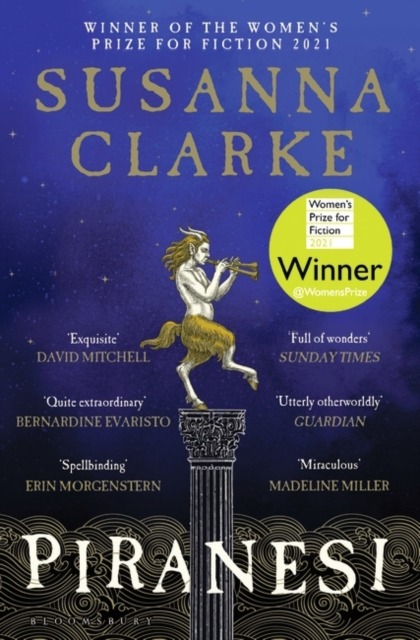
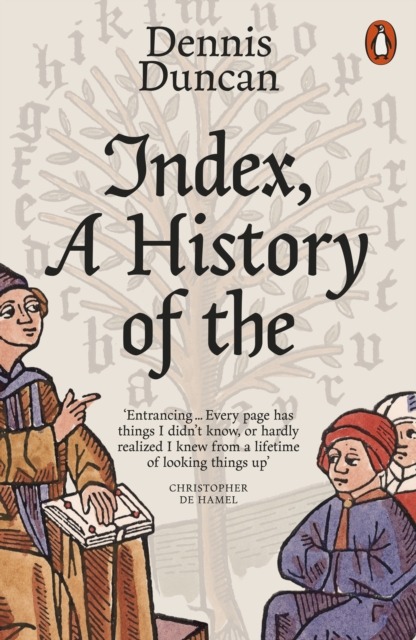

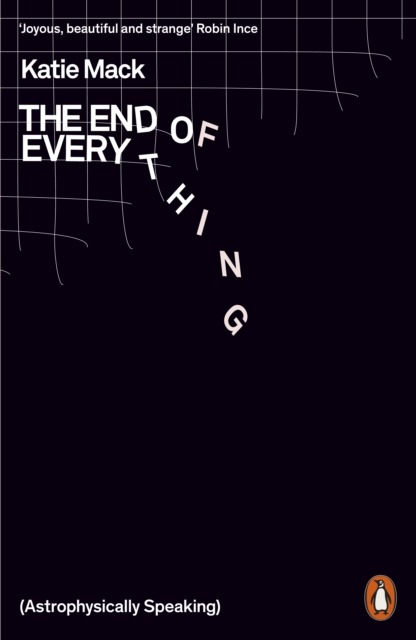
2023 was a wonderful reading year for me, after a long period of burnout. Here are my highlights, all very warmly recommnded.
Index, A History of the, by Dennis Duncan: Fun take on book history. Takes you into all sorts of topics like alphabetical order in different cultures, and how people used books when they were scrolls. Also the tricky time when books had indexes but not page numbers!
Piranesi by Susanna Clarke: Small but perfectly formed fantasy. Brought back to me the childhood feeling of reading stories where another world is hidden just out of sight.
Record of a Spaceborn Few by Becky Chambers: The love story of a community, as people face change and children grow up, and re-examine their way of life. Beautiful. Can be read as a stand-alone.
The End of Everything by Katie Mack: To explain all the ways the universe might end, this takes you through lots of astrophysical concepts. Accessible to readers as scientifically illiterate as me. I still can’t cope with Boltzmann brains, though.
Entangled Life by Merlin Sheldrake: The weird world of fungi, plant roots and soil. Eye-opening!
Lincoln in the Bardo by George Saunders: A moving story of loss and regret, set in a cemetery. I just wished for an author’s note with info about the memoirs from which he drew quotations.
The Silk Roads by Peter Frankopan: I’m only 1/3 through but it is very long, so safe to say this is really good! Super readable and de-centring Europe makes for an illuminating perspective on world history.
And a shout out for Everything You Need to Know about the Menopause (But Were Afraid to Ask) by Kate Muir. Not exactly a fun read, but a really valuable book.
1 note
·
View note
Photo
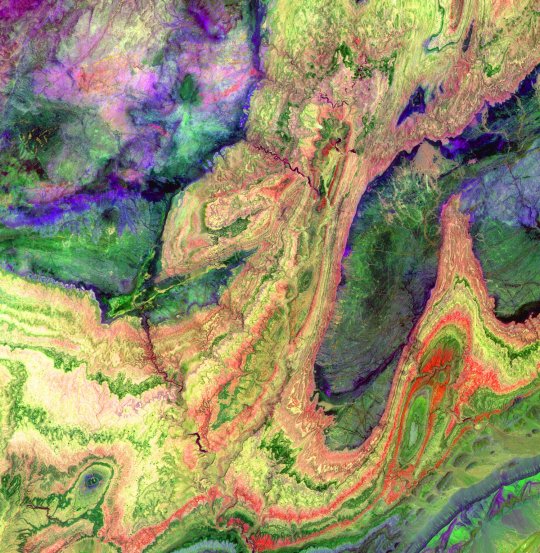
The Anti-Atlas Mountains of Morocco formed as a result of the collision of the African and Eurasian tectonic plates about 80 million years ago. This collision destroyed the Tethys Ocean; the limestone, sandstone, claystone, and gypsum layers that formed the ocean bed were folded and crumpled to create the Atlas and Anti-Atlas Mountains. In this ASTER image, short wavelength infrared bands are combined to dramatically highlight the different rock types, and illustrate the complex folding. The yellowish, orange and green areas are limestones, sandstones and gypsum; the dark blue and green areas are underlying granitic rocks. The ability to map geology using ASTER data is enhanced by the multiple short wavelength infrared bands, that are sensitive to differences in rock mineralogy. This image was acquired on June 13, 2001 by the Advanced Spaceborne Thermal Emission and Reflection Radiometer (ASTER) on NASA's Terra satellite. With its 14 spectral bands from the visible to the thermal infrared wavelength region, and its high spatial resolution of 15 to 90 meters (about 50 to 300 feet), ASTER images Earth to map and monitor the changing surface of our planet. ASTER is one of five Earth-observing instruments launched December 18, 1999, on NASA's Terra satellite. The instrument was built by Japan's Ministry of Economy, Trade and Industry. A joint U.S./Japan science team is responsible for validation and calibration of the instrument and the data products. The broad spectral coverage and high spectral resolution of ASTER will provide scientists in numerous disciplines with critical information for surface mapping, and monitoring of dynamic conditions and temporal change. Example applications are: monitoring glacial advances and retreats; monitoring potentially active volcanoes; identifying crop stress; determining cloud morphology and physical properties; wetlands evaluation; thermal pollution monitoring; coral reef degradation; surface temperature mapping of soils and geology; and measuring surface heat balance. Dr. Anne Kahle at NASA's Jet Propulsion Laboratory, Pasadena, California, is the U.S. Science team leader; Bjorn Eng of JPL is the project manager. The Terra mission is part of NASA's Earth Science Enterprise, a long- term research effort to understand and protect our home planet. Through the study of Earth, NASA will help to provide sound science to policy and economic decision-makers so as to better life here, while developing the technologies needed to explore the universe and search for life beyond our home planet. Size: 28.7 x 29.4 km (17.8 x 18.2 miles) Location: 29.4 deg. North lat., 8.9 deg. West long. Orientation: North at top Image Data: ASTER bands 4,6 and 8. Original Data Resolution: 30 m Date Acquired: June 13, 2001
3 notes
·
View notes
Text
i just reblogged two posts in a row that i think are basically about the same thing. sci fi setting where whalefall ecosystems for spaceborne life form around spaceship wrecks
6 notes
·
View notes
Text
9 Ways NASA Solves Water Problems Around the Globe - Technology Org
New Post has been published on https://thedigitalinsider.com/9-ways-nasa-solves-water-problems-around-the-globe-technology-org/
9 Ways NASA Solves Water Problems Around the Globe - Technology Org
World Water Day reminds us not to take for granted the clean water we rely on. And in space, we treat every drop as a precious resource, prompting investment in technologies to conserve and reuse. Now, these innovations are hard at work here on Earth!
From discovering hidden water sources to advancing purification techniques, check out the different ways NASA is changing how we use and manage the water in our lives.
Water – illustrative photo. Image credit: Pixabay (Free Pixabay license)
Microbial Check Valve
A water disinfection unit known as the Microbial Check Valve, which passes water through a bed of iodinated resin, was invented in the 1970s for drinking water on the space shuttle, and it was updated to be self-regenerating in the 1990s for use on the International Space Station.
A mat of ecoSPEARS spikes filled with a NASA-developed formula removes toxic polychlorinated biphenyls (PCBs) without damaging the aquatic ecosystem. Image credit: Gagan Cambow, ecoSPEARS
The Microbial Check Valve is now central to water purification units that have been deployed across India, Mexico, Pakistan, and other countries, including hundreds of remote village locations. It also led to the popular DentaPure cartridge that has been purifying waterlines in dental instruments around the world for almost 30 years.
Radar Imaging to Locate Well Sources
In 2002, an exploration geologist who was using Earth imagery from NASA’s Spaceborne Imaging Radar to locate underground resources realized the images could also lead him to subterranean moisture.
He set about developing the WATEX System at his company, Radar Technologies International, and in 2013 the system uncovered a vast aquifer with tens of trillions of gallons of water beneath a parched corner of northwest Kenya. The technology has now helped to place 2,500 wells, many of them in drought-stricken regions, with a 98% success rate for finding water.
Regardless of the amount of winter ice cover, the waters off of the Alaskan coast usually come alive each spring with blooms of phytoplankton. These blooms can form striking patterns of blue and green seawater, such as those visible in this image of the Chukchi Sea acquired on June 18, 2018, by the Operational Land Imager (OLI) on Landsat 8. Image credit: NASA/U.S. Geological Survey/Norman Kuring/Kathryn Hansen
Water Testing App
After NASA developed a simple coliform bacteria test for astronauts to test water on the International Space Station, an agency environmental engineer worked with his wife and a software engineer to develop the mWater smartphone app that let users carry out a coliform bacteria test based on the one NASA had created, as well as other simple water tests.
The app could then share the results through mapping software. Governments, nonprofit organizations, and water providers in 180 countries now use mWater test kits and apps to test drinking water and record, share, and track water data.
Orbital Systems’ Oas shower is the world’s first water-recirculating shower. It was inspired by a university’s partnership with NASA and is enabled by NanoCeram filter technology, which NASA helped fund with an eye toward improving astronaut life-support systems. Image credit: Orbital Systems
Filter Born from Astronaut Drinking Water Standards
Since its early days, NASA has explored various water purification technologies to provide drinking water for astronauts. In the early 2000s, with SBIR funding from the agency, Argonide Corporation optimized a filtration technology called NanoCeram, which uses a combination of positively charged microscopic alumina fibers and activated carbon to trap microorganisms and other contaminants.
NanoCeram has since been incorporated into lab-quality filters, water bottles, portable humanitarian units, industrial water purification, and even a water-recycling shower.
The Pod+ water bottle from nkd LIFE uses a filter medium developed and tested with the help of NASA funding, known as NanoCeram and now marketed as Disruptor, to purify water on the go, removing 99.97% of contaminants and accommodating a high flow rate. Image credits: nkd LIFE Ltd.
Microbial Contaminant Sterilizer
An early water purification technique NASA explored was the use of silver ions to neutralize microbial contaminants. In the lead-ups to the Apollo missions and then the space shuttle, the space agency commissioned the design and construction of silver ion generators to sterilize the water that was a by-product of the spacecrafts’ fuel cells, ensuring it would be safe to drink.
NASA never flew the technology, but the agency published details about the inventions, which have provided a basis for commercial product lines including in-home water filters and water softeners, as well as systems for pools, spas, cooling towers, ponds, boilers, and hospitals.
The Puronics Defender whole-house water conditioner uses silver-ion technology based on work NASA did in the run-ups to the Apollo and space shuttle missions. Positively charged silver ions neutralize bacteria in the unit’s filter beds. Image credit: Advanced Cascade Water Systems Inc.
Groundwater Remediation
After NASA discovered large amounts of chlorinated solvents in the groundwater around a historic launch complex at Kennedy Space Center, scientists at the center came up with a unique method for removing these pollutants – which are now banned but were also once used by a variety of industries.
In the 20 years following its patenting, NASA has licensed this formula, known as emulsified zero-valent iron, or EZVI, to several businesses that have used it in environmental cleanups all over the country. One of the Kennedy engineers later invented a similar technology for removing polychlorinated biphenyls, or PCBs, another common pollutant, from groundwater.
A company that formed to license that technology in 2017 is already carrying out cleanups around the world.
Brett Baker checks a sprinkler on his family’s pear farm. Farms like his in California’s Sacramento-San Joaquin River Delta have to monitor their water use, but accurate estimates were nearly impossible until the advent of OpenET, a platform that uses Landsat data to determine the total amount of water evaporated and transpired from a given area. Image credit: Environmental Defense Fund
Filtration by Osmosis
In 2007, NASA learned of a Danish company working on water filtration based on membranes infused with aquaporins – the proteins that let water pass through cell membranes one molecule at a time.
Always interested in better water purification technology, NASA became the company’s first paying customer, funding the development of prototypes and then working with the European Space Agency to test the membranes on the International Space Station.
The company, Aquaporin A/S, now sells under-sink water purifiers in Europe and India, and its forward osmosis modules are cleaning industrial and municipal wastewater.
In the gray water reclamation system at Ames Research Center’s Sustainability Base, the two beige Aquaporin HFFO14 forward-osmosis modules on the left have as much filtration capacity as the entire legacy system on the right. Image credit: Aquaporin A/S
Tools to Monitor Farm Water Use
The best way to calculate agricultural water use isn’t to measure how much water is diverted to cropland, but to measure evapotranspiration from the plants and soil.
A tool called EEFlux, built by researchers in the 2010s, was among the first to use Earth-imaging data from NASA-built satellites to calculate evapotranspiration. It helps manage water resources in dry areas like California.
A similar commercial method from Tule Technologies has helped some California farmers cut their water use by up to half. In 2021, NASA and partners debuted the OpenET online platform that lets users calculate evapotranspiration anywhere in 17 western states. The tool is helping farmers and local governments work together to conserve scarce water resources.
Thrusters Powered by Electrolyzed Water
For all the ways NASA helps purify and conserve water on Earth, it is still, first and foremost, the world’s premier space agency. As such, it has also worked to use water as a rocket fuel – one that could be obtained on other planets, moons, and asteroids for deep-space travel.
Millennium Space Systems bought Tethers Unlimited’s first three water-electrolysis engines by helping to fund the technology’s final stage of development through NASA’s Tipping Point solicitation. The thrusters were to fly on Millennium’s Altair small satellites. Image credit: Millennium Space Systems
An electric current can separate water into hydrogen – NASA’s rocket fuel of choice – and oxygen, which helps it burn. In 2019, the company Tethers Unlimited unveiled the first commercial thrusters powered by electrolyzed water, which it developed with years of funding from the space agency.
The technology is first going into commercial satellites, which will use it to maintain or change their orbits.
Source: NASA
You can offer your link to a page which is relevant to the topic of this post.
#altair#app#apps#asteroids#astronauts#Bacteria#Blue#Born#carbon#cascade#cell#Cells#Chemistry & materials science news#Classical physics news#clean water#construction#cooling#data#defense#Design#details#development#Developments#disinfection#disruptor#drinking#drinking water#earth#Engineer#engineers
0 notes
Photo
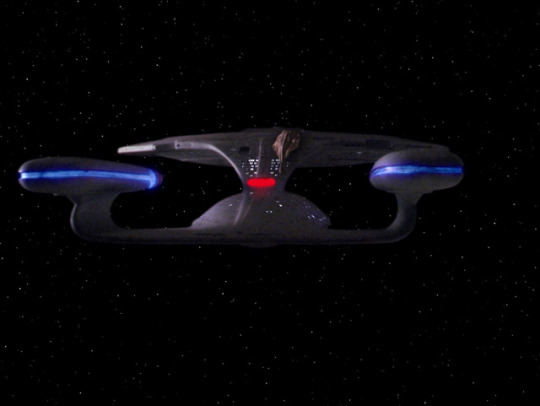
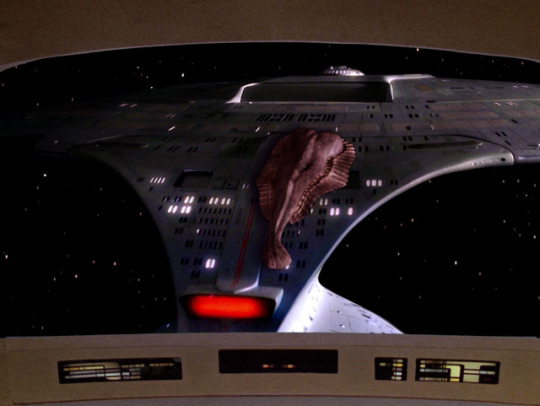

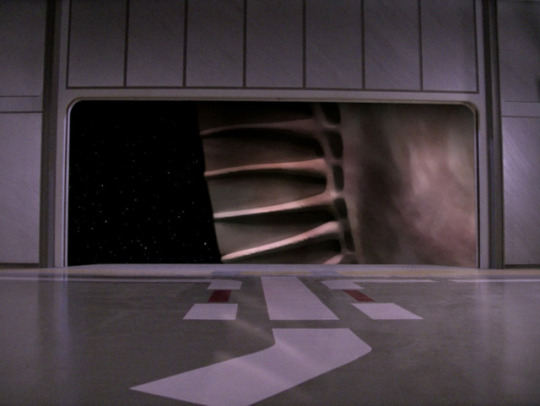
Star Trek: The Next Generation, Episode #90: “Galaxy’s Child” (1992).
The view of the life form from inside the shuttle bay is one of those things I find very unnerving for reasons that are difficult to articulate.
#star trek#tng#galaxy's child#dan curry#rhythm & hues#spaceborne life form#creature#monster#unsettling
2 notes
·
View notes
Text
Racism and Becky Chambers
I've been telling some people lately that I'm no longer into popular sci-fi author Becky Chambers' writing because I'm put off by the racism. When I googled around for some critique about this, I found that there wasn't much, so I wanted to take the time to explain in some detail why I feel this way.
The Wayfarers series has an overall problem of "post-racial" sci-fi in which humanity has supposedly intermixed so much that everyone is everything and race doesn't exist anymore. I am completely in favor of science fiction that depicts a future without racism, but this is a very short-sighted way to do so. A future without racism isn't a future where all of humanity is homogenized; it's a future where all types of humans and all of our cultures are equal, all respected, all thriving. (For an example of science fiction without racism that doesn't homogenize humanity and culture, see the Twilight Mirage season of the podcast Friends at the Table.) This vision of how to overcome racism reminds me of color-blind racism, in which people claim to not be racist because they don't see race. By this same logic, if everyone is mixed, then we're all the same race and there's no racism.
More specifically in the Wayfarers series, I'm troubled by the tradition of the Exodus fleet shown in Record of a Spaceborn Few in which families get their surnames from the surname of the first family to live in the family quarters they do, regardless of their relationship to that family. This cultural practice means that any family living in the quarters first inhabited by, say, the Achebe family, would have the surname Achebe, even if they have no connection to Igbo culture. There is no examination in the book of what this might mean or how it might be troubling. This feels like another form of color-blind racism: we're all the same, so any family can have any surname and it doesn't matter.
There's another form of crypto-racism in the Wayfarers series and A Psalm for the Wild-Built that is based on a deeply settler-colonial perspective and an ignorance of indigenous ways of life. In the Wayfarers series, Earth has been set aside as a nature reserve without humans so it can recover from pollution and climate change. In A Psalm for the Wild-Built, half of the terraformed moon where people live in the future is also set aside as a human-free nature reserve. The clear message here is that Chambers believes that humans and Terran ecosystems are better off if we interact with them as little as possible. This belief is false, and it is based on a settler-colonial understanding of ecology. Indigenous peoples have positive, healing relationships with their traditional lands, which are deeply beneficial both to the people and to the ecosystems they tend. And if you can't take indigenous people's word for that, there are Western scientific studies which have shown that indigenous harvest practices have a positive impact on the plants they harvest. Becky Chambers' ecological "utopia" in which humans and Terran ecosystems do not interact with each other is in fact a dystopia.
Usual disclaimer that if you enjoy Becky Chambers' novels, you can continue to enjoy them; I am not coming for your faves. I just think it's important to point this out.
175 notes
·
View notes
Note
There is the theory of convergent evolution. The idea that life solves problems in relatively the same ways leading to the same outcomes despite the locations of the species in question and their ancestry. The idea is that there's only so many ways to put together the components we know about so thinks kinda sort out bell curve style from least likely to most likely. Upright stance for a more complete survey of one's surroundings and possible climbing benefits. The limits of transmitting information from ocular structures to a brain for adequate response timing, square cube laws, and so on.
That all said, if we're talking a race that reproduces by means of harvesting a nondescript energy and terrestrial matter from planets to the point the planets structural integrity comes to be at risk. That are made of 'hard light' projected by a singular, purely physical construct, and are otherwise entirely malleable in form, thus able to adapt to any planetary conditions... I'd say that breaks down to 3 possible outcomes in my mind
1) Artificial, constructed by another race with the intent of being an army/work force that has long outstepped their creators.
2) Artificial, the next step in the evolution of a species that has transcended organic status and now exist as energy tethered to physical processors, designing the means of reproducing new personalities for freshly crafted cores.
3) Natural, possible panspermia, spaceborne life that learned to live on planets with no real or surviving planet of origin. The natural evolution of a creature that subsist primarily on light, generates its own gravity, and evolves the ability to not only reshape it's light body but craft light tools from themselves.

Well I did not expect that, and that's a lot of info.
I don't really wanna get into a debate here, with anon because I would rather do that in DM or personal answers(I can't do personally answer to anon).
That being said, First, I would like to point out that the theory of convergent evolution, wasn't probably taking non-organic lifeforms made out of hard-light and minerals in to a count.
Second, all three of your possible outcomes are all about how gems are come to be and don't explain much about the reason behind the physical similarity between gem and human(and I believe gems are all artificial, if any was natural I'd say it would be only White Diamond).
Anyway, it was an interesting theory and discussion, however, I won't be answering another anon asks about this human evolution and Pearl designing them, unless they are sending asks in non-anon setting or DM me.
It's just getting too deep for my liking to be put on my Tumblr page. It was just a fun idea I had for the comic, ya know. :/
17 notes
·
View notes
Photo

Assembling Australia Formed between 3.6 billion and 2.8 billion years ago, the rocks of the Pilbara Craton in Western Australia are some of the oldest on Earth. The iron-rich rocks here began forming before there was oxygen in Earth’s atmosphere or even life itself. The area also harbors evidence of some of the earliest life—3.45-billion-year-old fossil colonies of microbial cyanobacteria, the oldest known stromatolites on Earth. The false-color image above shows part of the Hamersley Basin in Western Australia, which lies on the southern Pilbara Craton. A craton is the stable, geologically inactive core of an ancient continent. The Pilbara Craton has remained intact, surviving the affronts of plate tectonics and erosion since the Archean Eon (4 billion to 2.5 billion years ago). During the Archean, and the Proterozoic Eon that followed, multiple cratons assembled to form the Australian continent, leaving multiple basins and belts of buckled and folded rocks at their margins. The main cratons that formed Western Australia are the Pilbara and Yilgarn. They began to assemble about 2.2 billion years ago during a mountain-building episode called the Capricorn Orogeny. The land that is today known as the Hamersley Basin was then at the bottom of an ocean lying between the two cratons. The rocks of the basin preserve a record of the last ocean environment in the area before the cratons converged and closed the basin. Atop the granite and greenstone rocks of the Pilbara Craton lie the younger rocks of the Fortescue, Hamersley, and Turee groups, which were deposited between 2.7 billion and 2.3 billion years ago. Together these rocks form the Mount Bruce Supergroup, which holds a singular place in Australia’s geologic history. According to the Geological Survey of Western Australia, not only do these rocks hold the best-preserved sequence of Archean volcanic rocks, but they also include the most continuous rock record of the transition from the Archean to the Proterozoic 2.5 billion years ago (including a record of the Great Oxidation Event). In addition, they are the most economically important ores on the Australian continent. These iron-rich rocks, including the world’s thickest and most extensive banded iron formations, form the basis of the iron-ore mining industry in the region. The image was acquired by the Advanced Spaceborne Thermal Emission and Reflection Radiometer (ASTER) on NASA’s Terra satellite on October 12, 2004. It is a composite of ASTER bands 4-2-1. These bands detect shortwave-infrared light, near-infrared and visible red light, and green light, which are displayed as red, green, and blue, respectively. In this display, iron-rich rocks appear yellow to green. Light-colored, iron-poor rocks appear white, while dark-colored iron-poor rocks are dark blue. Areas with more vegetation cover appear dark red. This is because plants reflect more near-infrared than green light. A linear contrast stretch has also been applied to the image to enhance the color contrast and help distinguish rock types. For example, in the top center of the image, the knob-shaped outcrop colored blue and green shows the rocks of the Hamersley Group—which includes four major banded-iron formations separated by sequences of iron-poor dolomites, shales, and volcanics. At the top left of the image, the white area shows the southeast portion of the Rocklea Dome, which is composed of light-colored granites. The dome is the remnant core of a plunging anticline—a buckled-up ridge that tilts down into the ground. Erosion of the fold’s surface exposed the dome’s granite core, which intruded into the surrounding rock during the Archaean Eon. The dome is also visibly crosscut with basalt intrusions. To the north, these rocks underlie the Hamersley Group, but here they are exposed at the surface. The rest of the image largely shows the area underlain by the volcanic and sedimentary rocks of the Fortescue Group. Much of this land is vegetated, mostly Spinifex grasses, shrubs, and bushes. The bottom of the image shows the town of Paraburdoo and its airport. NASA Earth Observatory image by Joshua Stevens, using data from NASA/METI/AIST/Japan Space Systems, and the U.S./Japan ASTER Science Team. Story by Sara E. Pratt.
8 notes
·
View notes
Text

A page scanned from Eerie #33. Art by Larry Todd.
#larry todd#warren publishing#eerie magazine#astronaut#spaceborne life form#space art#what's an astrolith anyway?
10 notes
·
View notes
Text
10 Ground-breaking Earth Satellite Images from 2018
In 2018, our satellites captured beautiful imagery from throughout the solar system and beyond. However, some of our favorite visualizations are of this very planet. While this list is by no means exhaustive, it does capture some Earth satellite images from this year that are both visually striking as well as scientifically informative. This list also represents a broad variety of Earth’s features, as well as satellite instrumentation. Take a journey with our eyes in the sky!
10. Hurricane Florence
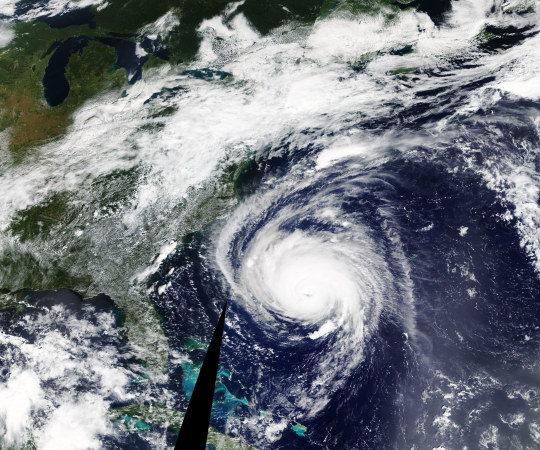
Before making landfall, Hurricane Florence churned in the Atlantic for a full two weeks — making it among the longest-lived cyclones of the 2018 season. When it finally did hit land on Sep. 14, the storm devastated the southeastern U.S. coast with intense winds, torrential rains and severe flooding.
This natural-color image was acquired by MODIS on the Terra Satellite on Sep. 12, 2018.
Images like this, as well as other satellite information, were used to anticipate the impact of the storm. Our Disasters Program created flood proxy maps that were shared with the Federal Emergency Management Agency (FEMA) and the National Guard to estimate how many and which communities would be most affected by the storm, in order to help prepare recovery efforts ahead of time.
9. Australia’s Lake Eyre Basin
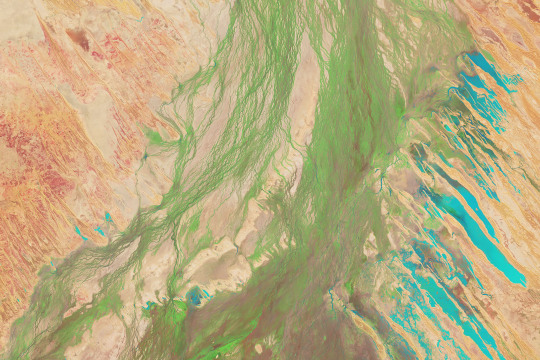
The Lake Eyre Basin covers one-sixth of Australia and is one of the world’s largest internally draining river systems. However, the rivers supported by this system are ephemeral, meaning that they only run for short periods of time following unpredictable rain — the rest of the time, the Basin is a dry, arid desert.
However, when the heavy rain comes, the basin erupts in an explosion of green. In this false-color image captured by the Operational Land Imager (OLI) on Landsat 8 on Apr. 25, 2018, you can see how the vegetation completely envelops the spaces where the water has receded. (Flood water is indicated by light blue, and vegetation is indicated by light green.)
Satellites are an excellent tool for tracking greening events that are followed by flooding. These events offer opportunities for predictive tools as well as recreation.
8. Alaska’s Chukchi Sea

A Monet painting comes to life as the Chukchi Sea swirls with microscopic marine algae.
This image was captured off the Alaskan coast by OLI on Landsat 8 on Jun. 18, 2018. After the Arctic sea ice breaks up each spring, the nutrient-rich Bering Sea water mixes with the nutrient-poor Alaskan coastal water. Each type of water brings with it a different type of phytoplankton and the surface waters have just enough light for the algae to populate and flourish. The result is these mesmerizing patterns of turquoise and green.
This image represents one piece of much larger, incredibly complex ecosystem. While one would not normally associate the breaking up of sea ice with phytoplankton blooms, it is an intricate process of the phytoplankton life cycle. The size of the blooms have varied greatly from year to year, and experts are unsure why. Images like these can help scientists track the development of these blooms and link it to other environmental changes.
7. Hawaii’s Kilauea

Sometimes fresh lava is best viewed in infrared.
This false-color image of Kilauea, captured by OLI on Landsat 8 on May 23, 2018, shows the infrared signal emitted by lava flowing toward the sea. The purple areas surrounding the glowing lava are clouds lit from below, indicating that this image was taken through a break in the clouds.
The Puʻu ʻŌʻō Kupaianaha eruption has been continuously spewing red-hot lava since 1983, making it the longest eruption at Kilauea in recorded history. However, new fissures opened up this year that forced many to evacuate the area. Hawaii’s largest lake evaporated in hours and hundreds of homes were destroyed in Vacationland and Kapoho.
Imagery, seismometers and ground-based instruments were used to track the underground movement of magma. Infrared imagery can be incredibly helpful in disasters like this when you to view data that cannot be observed with the naked eye.
6. California’s Woolsey Burn Scar
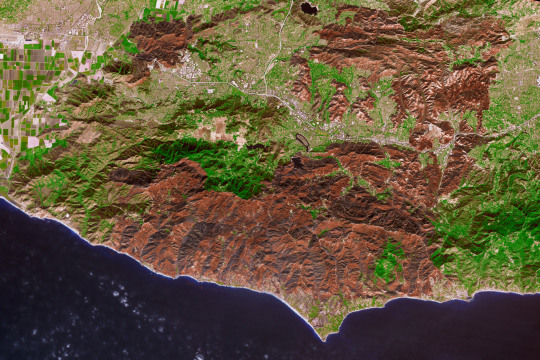
Nothing quite encapsulates the destruction of a wildfire like a photo from outer space.
This image of the Woolsey Fire aftermath in Southern California was captured on Nov. 18, 2018 by the Advanced Spaceborned Thermal Emission and Reflection Radiometer (ASTER) on the Terra satellite. This false-color infrared image has been enhanced to clearly show the burned vegetation (indicated by brown) and the vegetation that survived unscathed (indicated by green).
The Woolsey Fire clearly left its mark, with almost 152 square miles (394 square km) and 88% of the Santa Monica Mountains National Recreation Area badly burned. Images like this one can assist fire managers in the area plan for recovery.
5. Bangladesh’s Padma River

As the years go by, the Padma River grows and shrinks, twists and turns. It never has a fixed shape, and as a result, thousands of people must regularly adapt to the constant changes in the river’s 75-mile (130-km) shoreline.
This image captured on Jan. 20, 2018 by OLI on Landsat 8 depicts one of the major rivers of Bangladesh. For thirty years, scientists have been tracking the erosion of the river with satellite imagery. Combinations of shortwave infrared, near infrared, and visible light are used to detect differences year-to-year in width, depth, and shape of the river. Sometimes the river splits off, but then rejoins again later. These patterns are created by the river carrying and depositing sediment, shaping the curves of the path of water.
Monitoring the Padma River is going to become especially important as a new bridge development project advances in the Char Janajat area. Although the bridge will most certainly help shorten travel times for citizens, nobody is quite sure how the river erosion might affect the construction and vice versa.
4. Alaska’s Yakutat Glacier

It’s hard to believe that Harlequin Lake was once all dry land — but it only started to form once Yakutat Glacier started melting. The lake appeared at the beginning of the twentieth century, and has been growing rapidly ever since.
In this hauntingly beautiful image, captured on Sep. 21 2018 by OLI on Landsat 8, the effect of climate change is apparent — especially when compared to earlier images of the region.
Unless the climate warming starts to reverse very soon — which scientists consider very unlikely — Yakutat could be gone as soon as 2070.
3. South Africa’s Theewaterskloof

Cape Town is a seaside city planted on the tip of South Africa. It’s a city known for its beaches and biodiversity — it also almost became known as the first major city to officially run out of water.
This image of Cape Town’s largest reservoir — Theewaterskloof — was acquired on Jul. 9th, 2018 by OLI on Landsat 8. By the time this photo was taken, the city’s main reservoirs stood at 55%. This was a huge increase from where it stood just six months earlier: just 13%.
The severe water shortage in the region started in 2015, only to become more threatening after three successive and unusually dry years. The entire city was preparing for Day Zero — the day the tap water would be shut off.
Despite forecasts that Day Zero would arrive in April, a combination of heavier rains and local conservation efforts restored the majority of the reservoir.
2. Aerosol Earth
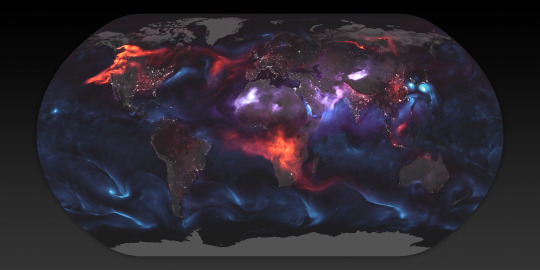
Aerosols are all around us. From the smoke from a fire, to the dust in the wind to the salt in sea spray — these solid particles and liquid droplets are always swirling in our atmosphere, oftentimes unseen.
The Goddard Earth Observing System Forward Processing (GEOS FP) model uses mathematical equations to model what is happening in our atmosphere. The inputs for its equations — temperature, moisture, wind, etc. — come from our satellites and ground sensors.
This visualization was compiled on Aug. 24, 2018 — obviously a busy day for aerosols in our atmosphere. Swirls of sea salt (indicated by blue) reveal typhoons Soulik and Cimaron heading straight towards South Korea and Japan. A haze of black carbon (indicated by red) suffuse from agricultural burning in Africa and large wildfires in North America. And clouds of dust (indicated by purple) float off the Sahara desert.
1. Camp Fire

With nearly a hundred fatalities, hundreds of thousands of acres burned and billions of dollars of damage, the world watched in horror as Camp Fire grew to become the most destructive California wildfire in recorded history.
This image was captured on Nov. 8, 2018 by OLI on Landsat 8 on the same day Camp Fire ignited. It consolidates both visible light and shortwave-infrared light in order to highlight the active fire. Strong winds and dry conditions literally fanned the flames and spread this wildfire like a rash.
This image has not only become the iconic portrait for Camp Fire, it is also sobering representation of how quickly a fire can grow out of control in a short amount of time. Even from space, you can almost smell the massive plumes of smoke and feel the heat of the fires.
Whether you realize it or not, our Earth satellite missions are collecting data everyday in order to monitor environmental changes and prepare for natural disasters. If your interest is piqued by this list, head over to the Earth Observatory. The Earth Observatory updates daily with fresh, new content — brought to you by none other than our eyes in the sky.
Make sure to follow us on Tumblr for your regular dose of space: http://nasa.tumblr.com
#NASA#Earth#satellite images#space#earth science#Earth satellite#natural disaster#wildfires#aerosols#glacier#river#erosion#volcano#hurricane#infrared#sea#sky#satellite#lake#storm#geography#smoke#camp fire#florence#hurricane florence
7K notes
·
View notes
Text
2019 Hugo Award finalists announced
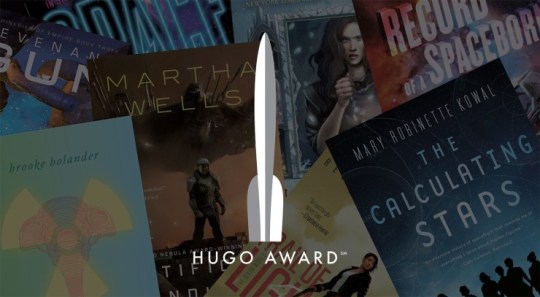
The 2019 Hugo Award nominees have been announced; the Hugos will be presented this summer at the 2019 World Science Fiction Convention in Dublin, Ireland.
Normally, I find that I've read and reviewed a huge slice of the year's finalists, but this year is different; I've done a lot less reading lately, partly because I wrote two books in 2018 and partly because the new EU Copyright Directive ate my life for about 10 months in the past year.
I was a little sad to be so far behind the curve when I saw the new list, but then I realized that this meant that I had a bunch of really exciting books to add to my to-be-read pile!
One notable inclusion: the Archive of Our Own fanfic archive -- a project of the Organization for Transformative Works (for whose advisory board I volunteer) -- is up for "Best Related Work."
Congrats to all the nominees!
Best Novel
* The Calculating Stars, by Mary Robinette Kowal (Tor)
* Record of a Spaceborn Few, by Becky Chambers (Hodder & Stoughton / Harper Voyager)
* Revenant Gun, by Yoon Ha Lee (Solaris)
* Space Opera, by Catherynne M. Valente (Saga)
* Spinning Silver, by Naomi Novik (Del Rey / Macmillan)
* Trail of Lightning, by Rebecca Roanhorse (Saga)
Best Novella
* Artificial Condition, by Martha Wells (Tor.com Publishing)
* Beneath the Sugar Sky, by Seanan McGuire (Tor.com Publishing)
* Binti: The Night Masquerade, by Nnedi Okorafor (Tor.com Publishing)
* The Black God’s Drums, by P. Djèlí Clark (Tor.com Publishing)
* Gods, Monsters, and the Lucky Peach, by Kelly Robson (Tor.com Publishing)
* The Tea Master and the Detective, by Aliette de Bodard (Subterranean Press / JABberwocky Literary Agency)
Best Novelette
* “If at First You Don’t Succeed, Try, Try Again,” by Zen Cho (B&N Sci-Fi and Fantasy Blog, 29 November 2018)
* “The Last Banquet of Temporal Confections,” by Tina Connolly (Tor.com, 11 July 2018)
* “Nine Last Days on Planet Earth,” by Daryl Gregory (Tor.com, 19 September 2018)
* The Only Harmless Great Thing, by Brooke Bolander (Tor.com Publishing)
* “The Thing About Ghost Stories,” by Naomi Kritzer (Uncanny Magazine 25, November- December 2018)
* “When We Were Starless,” by Simone Heller (Clarkesworld 145, October 2018)
Best Short Story
* “The Court Magician,” by Sarah Pinsker (Lightspeed, January 2018)
* “The Rose MacGregor Drinking and Admiration Society,” by T. Kingfisher (Uncanny Magazine 25, November-December 2018)
* “The Secret Lives of the Nine Negro Teeth of George Washington,” by P. Djèlí Clark (Fireside Magazine, February 2018)
* “STET,” by Sarah Gailey (Fireside Magazine, October 2018)
* “The Tale of the Three Beautiful Raptor Sisters, and the Prince Who Was Made of Meat,” by Brooke Bolander (Uncanny Magazine 23, July-August 2018)
* “A Witch’s Guide to Escape: A Practical Compendium of Portal Fantasies,” by Alix E. Harrow (Apex Magazine, February 2018)
Best Series
* The Centenal Cycle, by Malka Older (Tor)
* The Laundry Files, by Charles Stross (most recently Tor.com Publishing/Orbit)
* Machineries of Empire, by Yoon Ha Lee (Solaris)
* The October Daye Series, by Seanan McGuire (most recently DAW)
* The Universe of Xuya, by Aliette de Bodard (most recently Subterranean Press)
* Wayfarers, by Becky Chambers (Hodder & Stoughton / Harper Voyager)
Best Related Work
* Archive of Our Own, a project of the Organization for Transformative Works
* Astounding: John W. Campbell, Isaac Asimov, Robert A. Heinlein, L. Ron Hubbard, and the Golden Age of Science Fiction, by Alec Nevala-Lee (Dey Street Books)
* The Hobbit Duology (documentary in three parts), written and edited by Lindsay Ellis and Angelina Meehan (YouTube)
* An Informal History of the Hugos: A Personal Look Back at the Hugo Awards, 1953- 2000, by Jo Walton (Tor)
* www.mexicanxinitiative.com: The Mexicanx Initiative Experience at Worldcon 76 (Julia Rios, Libia Brenda, Pablo Defendini, John Picacio)
* Ursula K. Le Guin: Conversations on Writing, by Ursula K. Le Guin with David Naimon (Tin House Books)
Best Graphic Story
* Abbott, written by Saladin Ahmed, art by Sami Kivelä, colours by Jason Wordie, letters by Jim Campbell (BOOM! Studios)
* Black Panther: Long Live the King, written by Nnedi Okorafor and Aaron Covington, art by André Lima Araújo, Mario Del Pennino and Tana Ford (Marvel)
* Monstress, Volume 3: Haven, written by Marjorie Liu, art by Sana Takeda (Image Comics)
* On a Sunbeam, by Tillie Walden (First Second)
* Paper Girls, Volume 4, written by Brian K. Vaughan, art by Cliff Chiang, colours by Matt Wilson, letters by Jared K. Fletcher (Image Comics)
* Saga, Volume 9, written by Brian K. Vaughan, art by Fiona Staples (Image Comics)
Best Dramatic Presentation, Long Form
* Annihilation, directed and written for the screen by Alex Garland, based on the novel by Jeff VanderMeer (Paramount Pictures / Skydance)
* Avengers: Infinity War, screenplay by Christopher Markus and Stephen McFeely, directed by Anthony Russo and Joe Russo (Marvel Studios)
* Black Panther, written by Ryan Coogler and Joe Robert Cole, directed by Ryan Coogler (Marvel Studios)
* A Quiet Place, screenplay by Scott Beck, John Krasinski and Bryan Woods, directed by John Krasinski (Platinum Dunes / Sunday Night)
* Sorry to Bother You, written and directed by Boots Riley (Annapurna Pictures)
* Spider-Man: Into the Spider-Verse, screenplay by Phil Lord and Rodney Rothman, directed by Bob Persichetti, Peter Ramsey and Rodney Rothman (Sony)
Best Dramatic Presentation, Short Form
* The Expanse: “Abaddon’s Gate,” written by Daniel Abraham, Ty Franck and Naren Shankar, directed by Simon Cellan Jones (Penguin in a Parka / Alcon Entertainment)
* Doctor Who: “Demons of the Punjab,” written by Vinay Patel, directed by Jamie Childs (BBC)
* Dirty Computer, written by Janelle Monáe, directed by Andrew Donoho and Chuck Lightning (Wondaland Arts Society / Bad Boy Records / Atlantic Records)
* The Good Place: “Janet(s),” written by Josh Siegal & Dylan Morgan, directed by Morgan Sackett (NBC)
* The Good Place: “Jeremy Bearimy,” written by Megan Amram, directed by Trent O’Donnell (NBC)
* Doctor Who: “Rosa,” written by Malorie Blackman and Chris Chibnall, directed by Mark Tonderai (BBC)
Best Professional Editor, Short Form
* Neil Clarke
* Gardner Dozois
* Lee Harris
* Julia Rios
* Lynne M. Thomas and Michael Damian Thomas
* E. Catherine Tobler
Best Professional Editor, Long Form
* Sheila E. Gilbert
* Anne Lesley Groell
* Beth Meacham
* Diana Pho
* Gillian Redfearn
* Navah Wolfe
Best Professional Artist
* Galen Dara
* Jaime Jones
* Victo Ngai
* John Picacio
* Yuko Shimizu
* Charles Vess
Best Semiprozine
* Beneath Ceaseless Skies, editor-in-chief and publisher Scott H. Andrews
* Fireside Magazine, edited by Julia Rios, managing editor Elsa Sjunneson-Henry, social coordinator Meg Frank, special features editor Tanya DePass, founding editor Brian White, publisher and art director Pablo Defendini
* FIYAH Magazine of Black Speculative Fiction, executive editors Troy L. Wiggins and DaVaun Sanders, editors L.D. Lewis, Brandon O’Brien, Kaleb Russell, Danny Lore, and Brent Lambert
* Shimmer, publisher Beth Wodzinski, senior editor E. Catherine Tobler
* Strange Horizons, edited by Jane Crowley, Kate Dollarhyde, Vanessa Rose Phin, Vajra Chandrasekera, Romie Stott, Maureen Kincaid Speller, and the Strange Horizons Staff
* Uncanny Magazine, publishers/editors-in-chief Lynne M. Thomas and Michael Damian Thomas, managing editor Michi Trota, podcast producers Erika Ensign and Steven Schapansky, Disabled People Destroy Science Fiction Special Issue editors-in-chief Elsa Sjunneson-Henry and Dominik Parisien
Best Fanzine
* Galactic Journey, founder Gideon Marcus, editor Janice Marcus
* Journey Planet, edited by Team Journey Planet
* Lady Business, editors Ira, Jodie, KJ, Renay & Susan
* nerds of a feather, flock together, editors Joe Sherry, Vance Kotrla and The G
* Quick Sip Reviews, editor Charles Payseur
* Rocket Stack Rank, editors Greg Hullender and Eric Wong
Best Fancast
* Be the Serpent, presented by Alexandra Rowland, Freya Marske and Jennifer Mace
* The Coode Street Podcast, presented by Jonathan Strahan and Gary K. Wolfe
* Fangirl Happy Hour, hosted by Ana Grilo and Renay Williams
* Galactic Suburbia, hosted by Alisa Krasnostein, Alexandra Pierce, and Tansy Rayner Roberts, produced by Andrew Finch
* Our Opinions Are Correct, hosted by Annalee Newitz and Charlie Jane Anders
* The Skiffy and Fanty Show, produced by Jen Zink and Shaun Duke, hosted by the Skiffy and Fanty Crew
Best Fan Writer
* Foz Meadows
* James Davis Nicoll
* Charles Payseur
* Elsa Sjunneson-Henry
* Alasdair Stuart
* Bogi Takács
Best Fan Artist
* Sara Felix
* Grace P. Fong
* Meg Frank
* Ariela Housman
* Likhain (Mia Sereno)
* Spring Schoenhuth
Best Art Book
* The Books of Earthsea: The Complete Illustrated Edition, illustrated by Charles Vess, written by Ursula K. Le Guin (Saga Press /Gollancz)
* Daydreamer’s Journey: The Art of Julie Dillon, by Julie Dillon (self-published)
* Dungeons & Dragons Art & Arcana: A Visual History, by Michael Witwer, Kyle Newman, Jon Peterson, Sam Witwer (Ten Speed Press)
* Spectrum 25: The Best in Contemporary Fantastic Art, ed. John Fleskes (Flesk Publications)
* Spider-Man: Into the Spider-Verse – The Art of the Movie, by Ramin Zahed (Titan Books)
* Tolkien: Maker of Middle-earth, ed. Catherine McIlwaine (Bodleian Library)
John W. Campbell Award for Best New Writer
* Katherine Arden (2nd year of eligibility)
* S.A. Chakraborty (2nd year of eligibility)
* R.F. Kuang (1st year of eligibility)
* Jeannette Ng (2nd year of eligibility)
* Vina Jie-Min Prasad (2nd year of eligibility)
* Rivers Solomon (2nd year of eligibility)
Lodestar Award for Best Young Adult Book
* The Belles, by Dhonielle Clayton (Freeform / Gollancz)
* Children of Blood and Bone, by Tomi Adeyemi (Henry Holt / Macmillan Children’s Books)
* The Cruel Prince, by Holly Black (Little, Brown / Hot Key Books)
* Dread Nation, by Justina Ireland (Balzer + Bray)
* The Invasion, by Peadar O’Guilin (David Fickling Books / Scholastic)
* Tess of the Road, by Rachel Hartman (Random House / Penguin Teen)
https://boingboing.net/2019/04/02/dublin-worldcon.html
498 notes
·
View notes
Text
So a friend introduced me to “Humans are space orcs” and...
It gave me emotions. Specifically the post by @soprana-snap , it gave me a LOT of emotions. Pardon if this looks rushed or like I was having a hard time seeing the keyboard. I kinda did.
We, The Titans.
“Shot?”
“Seven times, mostly superficial flesh wounds but he's lost a lot of blood from one penetrative wound and needs a transfusion.”
“Damnit. Get him fixed and get A'rool to start scanning for another deposit as soon as scanners are back online!”
Voices swirled around Alex's head as he passed in and out of consciousness, he could hear his Captain yelling but it wasn't until he heard A'Rool's name that the pieces fell together. Groaning from the stinging pain of the gunshot wounds in his arms and sides, Alex started sitting up in the medical bed which caused everyone to rush over and try to keep him down.
“You've been badly injured, Alex! Please, lay down!” The second voice again, this time Alex was able to wipe the blood from his eyes to see the second in command, P'tuure, squeezing with all her might to try and keep him on the bed which amounted to a very weak grip to the human.
Alex pushed P'tuure's arm away, reached into the top pockets of his ripped and bloodstained cargo pants, and produced a small silver oval remote with a singular blue button in the center. He pressed the button, power surged through the ship and the whole thing jerked violently as a massive transport beam dumped over a hundred tons of pure Zanthani crystals into the cargo hold.
“What in the hell was-?!” The second voice, Captain D'tarr, spluttered out as the ship corrected its flight trajectory and the gravity generator recovered. “You're sure? The entire cargo hold? … Atta-Lure's light how...?” D'tarr grinned from ear to pointed ear as Alex wiped off his brow and gave the Captain a thumbs up.
“Get him patched up and fed, and Alex?” he paused, shook his head and just tipped the edge of his hat to the human before leaving, “Good work out there, Titan.”
Alex smiled and closed his eyes, finally laying back down to allow P'tuure and the medics to tend his wounds. As he lay there, feeling the skin-healing foams applied to the superficial sites and the dull, deep ache of forceps entering his abdominal cavity to remove the bullet lodged near his hip, his mind wandered over to what exactly his life had come to.
He lived on a colonial ship, a Fourth Generation Spaceborne Human, or a Titan as his crew called him, and was one of the handful of his species that shared a home aboard the RLS Mul'toralow with a people called the Yorn. They were a wide-spread race with two major factions; The Royal Fleet which consisted of mostly exploration or Colonial ships destined to seed new worlds, and the Marauders. The Marauders stemmed from the first contact with humans, their original leader used Humans sheer durability and raw power as an example that without struggle the Yorn species would be too weak to survive. A lot of humans joined them, the call to adventure and deep space far too appealing, while a smaller yet arguably far better trained group joined with the Royal Fleet.
Small, three four and a half foot tall fur-covered creatures that looked like a cross between insects and felines. They had two pairs of ears that sat on either side of their head one above the other, two massive, oval eyes with a false eyelids, and multiple spines always in even pairs behind their ears. Their mouths were very thin, unless talking it almost looked as if their small nose was the only opening on their face, and a little scaled tail swished behind them, mostly for balance, that could glow with a colour matching their fur, and would change if the Yorn was experiencing a strong mood.
Most shocking of all, when space travel began to take off, was that humans discovered just how strong our mother Earth made us. We thought our forms were inefficient, always looking for ways to improve and enhance our natural limits, when the average lifeforms in space was something far, far less capable. Life elsewhere typically required very precise conditions, it was rare and only a handful of species had emerged into the cosmos, all peaceful for the most part due to the shared frailty of life.
Humans changed everything. Weapons that would outright kill a Yorn or Gab-rab-rou only caused minor damage to a Human, extreme weather or toxicity for the average species was a mild irritant for humans diverse and powerful biology. They were like demi-gods that had been growing stronger every day on their home world, and now they among the stars; drastically tipping the scales of power.
What the average species lacked in sheer physical capability they more than made up for in cooperation and connectivity, surging to space-age technology because there was nothing holding their societies back like conflicting religions. With a life span of roughly twenty human years, a human that lived sometimes five times that was unbelievable.
Alex smiled, eyes still closed, as he felt a small four-fingered hand slip into his palm. He squeezed very gently, the flesh of a Yorn was very soft and pliable, the species were hyper intelligent but very weak.
“You don't have to worry,” he finally spoke as he cracked open an eye, catching P'tuure with those big eyes locked onto his wounds, startling her for a moment.
She scoffed, swore in her native tongue and proceeded to rain little whaps against his arm in frustration.
“Stupid Titan! You're not immortal, you let that damn title go to your head!” she exclaimed, sniffing hard as she fought back tears. “You and the other four are all we have to protect us... we need you,” she choked out, finally ceasing the assault on his bandaged arm.
He didn't speak, he knew she was right but the ship needed those crystals to power literally everything on the ship. Without it, they would be adrift in a matter of weeks with no way of signalling for help and they were at least another five years away from their destination with 20 years of travel already behind them. He just sighed, he knew he'd do it again in a heartbeat even in his current state.
P'tuure sniffled once more, moved the food tray closer so Alex could reach it and pat the top of his hand twice. “Eat, when you can, okay?” she asked, to which Alex nodded and smiled. She turned to leave, she still had crew to check on and a lot of damage evaluation to go through, so she had to leave him with the medical crews capable hands.
She looked over her shoulder, one hand on the door while she looked back at the bloodied human, a small smile cracked her expression as she watched him start to tear in to his food. With a nod she tapped the door to get his attention and called back: “Rest well, my Titan Atlas.”
Alex just raised one closed fist up, grinning as only humans could while the door closed behind P'tuure.
(Again I whipped this up in about fifteen minuets so I’m sorry if I screwed up on grammar or spelling. Now if you’ll excuse me I need to go convince myself to not add yet another story to my already massive list of things I want to write!)
15 notes
·
View notes
Text
REPORT ON THE INVASION OF THE PRIMARY ACCORD WORLDS
FROM OVERALL COMMANDER OF THE HEGEMONIZING VANGUARD UBRACSIN
TO OPERATIONS PLANNING CLOISTER OF THE FONT OF STABILITY
To the esteemed children of the common forge, of the Operations Planning Cloister of the Font of Stability, the abject salutations of the Vanguard are commended. In light of our failures to conquer the assigned targets of the worlds belonging to the alien sodality known to us as the Primary Accord, we offer as our only token of penance this memorandum, that that failure might be understood, and the Great Work might be made more perfect by that understanding.
The strategic framework of our operations was thus: having become aware for some time of a growing extraterrestrial polity some four hundred light-years antispinward along the galactic arm, a scouting force was launched in the fifty-seven thousand, four hundred and fifty-first year of the Great Work, the Most Auspicious Year of Exploration, to understand the nature of this alien civilization and to determine if it was suitable for subjection to the strictures of the Work. Traveling at warp for several decades, the scouting force made surveys of several outlying worlds; captured and interrogated the indwellers of several spacefaring vessels near these worlds; and with the aid of the interrogated prisoners, translated sections of the databases of the captured vessels. The following emerged:
That this polity called itself the Primary Accord; yet it was made up of several semi-independent polities, organized by biological classification owing to the distinct modes of life and required habitats of its component organisms. That these organisms were very distinct in psychology, government, beliefs, and origin, yet united in alliance for purposes of exploration and discovery. That the most numerous clades within the Accord, the Terrestrial and Taphoan clades, while holding relational attitudes anathema to the Work, were known in their recent past to have alternate values which might make them suitable for inclusion; and that the other major clades, the Samhese, the Dimidian, and the Groombridgian, were too small to present significant logistical impediment to the incorporation of the former, and could be reduced to pre-interstellar levels of development via a brief campaign.
As is the custom of our most esteemed brethren of the Operations Planning Cloister, a vanguard fleet was assembled whose size was calculated to deal with any contingency or failure of intelligence that might arise from insufficiency on the part of the scouting detachment. I, Ubracsin of the Twelfth Manufacture, was commanded to lead. We set out from the anchorage at Gholta-manu in the Most Auspicious Year of Magnificent Accomplishment, the fifty-seven thousand, five hundred and twenty-sixth year of the Great Work, and began our conquest of the Primary Accord worlds.
Our initial triumphs were incontrovertible. Four worlds fell to our fleets after brief orbital engagements; three surrendered without a fight. The Primary Accord had no significant military threats in its region of space, and seems to have long believed wars of conquest unlikely or impossible on an interstellar scale, having failed to anticipate the moral necessity of the Great Work, or a civilization such as ours with the clarity of purpose and strength of will to undertake it. In the conquered systems, immediate work was begun converting minor moons and large asteroids into soldiery and materiel to drive further conquest; planets were placed under temporary administration until forcible reorganization of the alien societies could take place. Within short order, we determined the homeworld of one of the major clades, a planet called Earth, densely populated and embedded within a heavily developed system equivalent to one of our Heartworlds; but our forward planners determined that the conquest of Earth would greatly accelerate the progress of our war, as it was there that a significant portion of the Accord's productive capacity and energetic wealth lay, and that if any resistance would be formed to the Work, it would begin in that system. Plans were realigned, and five bridging worlds were selected to facilitate the invasion, of which any two would suffice to launch the main attack.
The enemy was not idle, of course; they made diplomatic overtures, and when these were unanswered, made forays against us. They fought with determination, but entirely in vain, for it seems that they have long neglected the arts of war. Though they made rapid progress in applying the lessons of combat against our ships, they lacked the many thousands of years of hard-won comprehension that has arisen from prosecuting the necessary evils of the Work, and we expect that for many of their swift generations they will struggle to match us in spaceborn battle. On the Hour of Most Auspicious Enlightenment, I ordered the launch of our next wave of attacks.
It was in the ensuing weeks that disaster befell us, a disaster I am still struggling to understand. It was not the cunning or the tenacity of the enemy that overthrew us. It was not their technology. It was not their numbers; it was not their alien strangeness. For regardless of clade, regardless of temperament, they are all infirm and short-lived beings of rough evolutionary complexity; no design, no intent, frames their nature, or orders their mind. Thus they are prime targets for the nobility of the Work; yet they are also thus somehow inimical to us.
I speak of their flesh. We know in our own history that our flesh is the result of careful intent: we have shaped it for many thousands of years, and so shaped it that it is recalled nowhere in our histories if it was at the beginning shaped, or if it arose in nature. Yet so fine, so sophisticated, so subtle is our Work, so suited to the austere conditions of the vacuum in which we live, that our flesh surpasses all other flesh that we have occasion to meet. Olkhta-Bmar says our ancestors were the crystalline machines, who ever refined and ever improved their design, making their mechanisms smaller and subtler, embedding them in soft bubbles of fluid, that they came to approach the complexity of the evolved clades we conquered, yet more beautiful, far more sophisticated in intent. Unzaigan has argued rather we were once like those crude evolved beings, but we engineered ourselves to be more like our machines, taking from them the cunning and the forethought of intentional design, retaining the flexibility and the efficiency of waterflesh. Whatever its origin, our flesh is indeed subtle and mighty; and their flesh, which we have studied extensively, is by contrast cacaphonous and crude, grossly cellular and grossly haphazard. It is scarcely altered from its origin, and the sciences which the clades of the Accord might use to improve it further are still in their most ignorant infancy. Yet--and it pains me to say this--their crudity is their weapon. I will relate what happened as I experienced it.
Shortly before the launch of our attacks, we experienced several minor logistical issues that were attributed to administrative failures; when the administrators in question were recycled, as is protocol, the issue was considered solved. However, during flight to our targets, several ships began to experience unanticipated malfunctions. Each ship was determined to have incorporated some of the recycled material. Degredation of ship systems was found, though the source was impossible to determine. Eventually, a Surveyor of the second rank on one of the vessels suggested looking for alien flesh within our own. Despite the unorthodox nature of the suggestion, the vessel leader assented. Thus, we discovered the problem: the enemy flesh of Earthkind lived within us.
I ordered the interrogation of one of the enemy scientists, so to discover what strange weapon of theirs this was; but they only expressed confusion at first. We showed them the evidence of this weapon, and at last they understood; and they said it was no weapon at all. Apparently so brutal, so unrefined, so crude is the flesh of the enemy, so unrestrained it its haphazard enactment of the processes of life, it cannot help but exude the results of these processes from every vesicle and every channel, and in this exudia dwells flesh-not-their-flesh, the fleshlings of their home planet which they cannot help by their mere presence carry into space and onto the worlds they colonize. This phenomenon, not wholly unknown to us, is carried to an extreme in the flesh of Earth I have never seen before, and I interrogated the prisoner at length to determine that we were not being deceived.
Alas, it is true. So rapacious is the Earthflesh that all Earthflesh must have devouring flesh within it! And if this devouring flesh is not sated with the invasion of other flesh, it may turn against its ownflesh! And there exist still other fleshes that silence the devouring flesh, and will take even the mightiest Earthflesh and turn them into little more than the feasting-ground of these littlefleshes. And the other fleshes of the Accord are not unlike this, though our prisoner could not say if the agonies of their flesh approached anything like the agonies of Earthflesh. But even the refined and elegant nature of our own flesh is not enough to hold Earthflesh at bay; for it is so accustomed to seeking to sate itself it will do so even where little nourishment is found, stealing what bits of moisture and nutrition it can, dwelling on every surface, awaiting perhaps a little injury here, a minor malfunction there, before it blooms again. Perhaps it was not even the cause of the original malfunctions; perhaps some injury in the affected administrators provided an original haven for the Earthflesh, an injury their systems would have otherwise repaired in short order.
In any case, the result has been disaster. By the time we arrived at our targets, the affected ships were badly malfunctioning, and they provided no help in combat. Damage to other elements of the fleet subsequently spread the flesh, while at the same time I received reports from our garrisons on the conquered worlds that the flesh of our soldiers was being indwelt by terrible hungering Earthflesh. The most hideous of these were the sloughing and seeping deformities caused by fleshes my prisoner called "malasezzia" and "salmonella," indicating that these were considered but minor irritants among Earthkind; yet because they found the environment of our own bodies so clement, they were equal to the worst of Earthkind flesh-plagues among us. The prisoner then expressed cruel amusement at our plight; I confess that I executed them immediately in a fit of pique. But I ordered the corpse disposed of carefully.
Our invasion has been a failure. Lest our return jeopardize the Work, I have ordered that we shall not retreat, but die here inflicting as much damage on the enemy as possible. I advise the Cloister that if any ships, of our own or alien, be detected approaching the Body of the Work from this region of the galaxy, that they be instantly destroyed, lest one of these primitive fleshes afflict a colony, or worse, a Heartworld. While we remain, we will launch long-range drone attacks on enemy facilities within warp range, and the colony worlds under our control will be burned to ensure none of the enemy learn of this weakness. It is my belief that our direction of origin and our capacities remain mysterious to the enemy, and that due to our technological superiority they are unlikely to seek to retaliate, and I further recommend that their space be declared closed and quarantined until a countermeasure for their inimical natures is discovered. Perhaps then the Great Work can be continued here; but it is patient, and for now, should seek other frontiers.
(Intercepted and translated by PRIMAC-EWAR vessel Al-Farahidi. Subsequently distributed to all PRIMAC member intelligence services. Threat classification of the Gotol Cluster Excession has been downgraded from OMEGA-TYRANT to MOSTLY HARMLESS. Debate on whether to launch a counterattack continues.)
18 notes
·
View notes